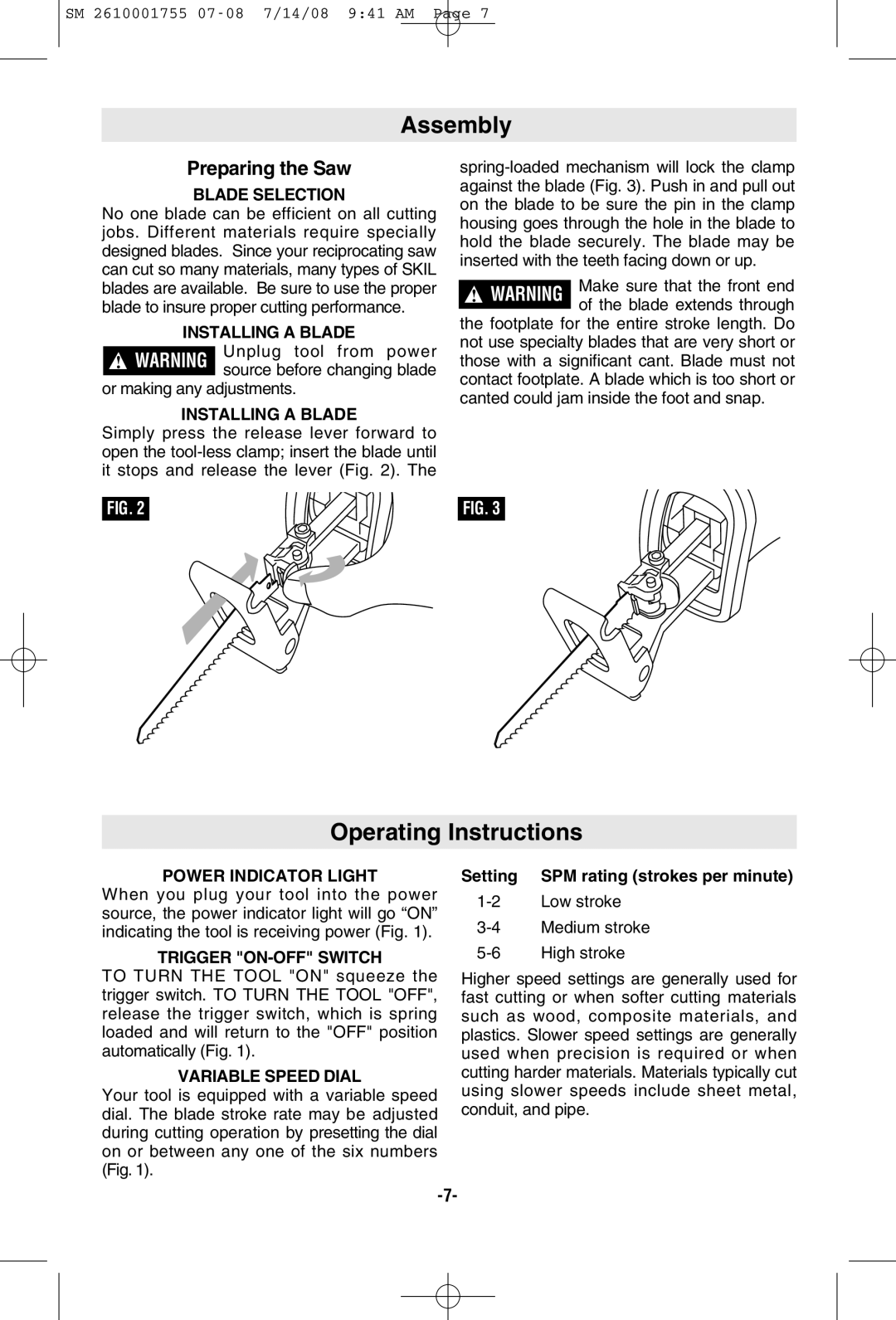9215 specifications
The Skil 9215 is a versatile and efficient tool that is designed for both DIY enthusiasts and professionals. Known for its powerful performance and innovative features, this tool stands out in the competitive market of power saws. One of its most notable characteristics is its 12-amp motor, which delivers exceptional cutting power and enables the saw to handle a variety of materials with ease. The robust motor ensures that the Skil 9215 can tackle demanding tasks, making it ideal for cutting wood, metal, and plastic.The Skil 9215 is equipped with a variable speed control feature, allowing users to adjust the speed according to their specific cutting needs. This technology enhances precision and helps achieve clean, accurate cuts in different materials. The saw can operate at a wide range of speeds, ensuring compatibility with diverse cutting applications and improving overall user experience.
Another significant feature of the Skil 9215 is its integrated laser guide system. This innovative technology projects a laser line onto the workpiece, providing users with a clear visual reference for precise cutting. The laser guide is particularly beneficial for achieving straight cuts, making it easier for users to follow their intended cutting path.
The design of the Skil 9215 focuses on user comfort and safety. It features an ergonomic handle that offers a secure and comfortable grip, which reduces fatigue during extended use. The tool also includes a safety switch that prevents accidental starts, ensuring that the saw is only activated when intentionally engaged.
The Skil 9215 has a compact and lightweight design, making it easy to transport and maneuver, especially in tight spaces. This portability makes it an excellent choice for both home improvement projects and professional applications. Additionally, the saw includes a dust blower function that keeps the cutting line clear of debris, enhancing visibility and maintaining precision during cuts.
In terms of durability, the Skil 9215 is built with high-quality materials that stand up to rigorous use. Its sturdy construction ensures longevity, making it a worthwhile investment for anyone in need of a reliable cutting tool. With its blend of power, precision, and user-friendly features, the Skil 9215 is an outstanding choice for those looking to achieve professional-grade results with ease.

